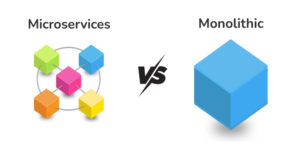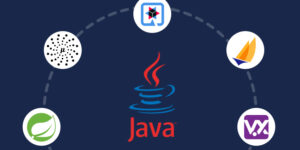
Introduction
In the steadily developing scene of programming improvement, the reception of microservices architecture stands apart as an extraordinary methodology. Microservices, a compositional style that structures an application as an assortment of little, freely deployable administrations, offers readiness, versatility, and strength. When combined with the force of Java, this blend turns into a powerful power for designers intending to construct vigorous and versatile applications. In this far reaching article, we will dig into the prescribed procedures and execution systems for consolidating Microservices architecture with Java, giving experiences to both Java Developer Training and Placement.
Figuring out Microservices Engineering
Microservices architecture is a takeoff from solid structures, separating applications into more modest, inexactly coupled administrations. Each help, planned around a particular business capacity, works freely, conveys through APIs, and can be sent and scaled autonomously. This decentralized methodology offers a few benefits, including further developed versatility, issue disengagement, and simplicity of persistent conveyance.
Best Practices and Implemention of Microservices Architecture and Java
1. Administration Decentralization and Autonomy
- Best Method: Plan every microservice to be independent and autonomously deployable.
- Implementation: Utilize Java’s secluded elements to embody the usefulness of every microservice. Influence systems like Spring Boot to make independent Java microservices.
2. Design and documentation based on the API
- Best Method: Prior to implementing microservices architecture, prioritize the design of APIs to ensure consistent communication.
- Implementation: Use devices like Strut or OpenAPI for Programming interface documentation. Characterize and normalise correspondence conventions, like Relaxing APIs, to empower consistent reconciliation.
3. Versatility and Adaptation to internal failure
- Best Method: Execute systems for dealing with deficiencies and guaranteeing flexibility.
- Implementation: For circuit breaking, fallback mechanisms, and graceful degradation, make use of tools like Hystrix. Execute retry methodologies and breaks to deal with expected disappointments.
4. Continuous Deployment and Integration (CI/CD)
- Best Method: Embrace CI/Compact disc pipelines to mechanise testing, reconciliation, and sending.
- Implementation: To automate the testing and distribution of microservices, make use of CI/CD tools like Jenkins, GitLab CI, or another one. Guarantee careful unit testing, combination testing, and start to finish testing.
5. Containerization and Organization
- Best Practice: Containerize microservices for consistency and adaptability.
- Implementation: Use Docker for containerization, making lightweight, compact, and predictable conditions. To effectively manage and scale microservices, use container orchestration tools like Kubernetes.
6. Unified Logging and Checking
- Best Practice: To gain insight into the performance of microservices, implement centralized logging and monitoring.
- Implementation: Use instruments like ELK Stack (Elasticsearch, Logstash, Kibana) for logging and checking. Incorporate with application execution checking (APM) devices for constant bits of knowledge into microservices conduct.
7. Designing for security
- Best Practice: At each stage of the development of microservices, place security first.
- Implementation: Execute secure correspondence utilizing HTTPS, utilize validation and approval systems, and lead normal security reviews. For effective security implementations, make use of tools like Spring Security.
8. Information The executives Systems
- Best Practice: Embrace a microservices-accommodating information base methodology.
- Implementation: Take into consideration databases that adhere to the principles of microservices, such as NoSQL databases for particular microservices. Carry out the data set per administration example to guarantee information autonomy.
Java Designer Preparing and Microservices
A Cooperative Relationship for Java engineers, embracing microservices architecture requires a profound comprehension of both Java’s capacities and the standards of microservices plan. This is the way Java Engineer Preparing can line up with the requests of microservices improvement
i. Complete Comprehension of Java Biological system
- Preparing Concentration: Guarantee designers have serious areas of strength for any of java developer course basics and high level elements, including particularity, multithreading, and nonconcurrent programming.
- Combination with Microservices: Java’s secluded highlights can be utilized to epitomize microservices functionalities. Engineers ought to comprehend how to utilize Java elements to make independent, deployable microservices.
ii. Particular System Preparing
- Preparing Concentration: Give preparing on systems essential to microservices advancement, like Spring Boot.
- Joining with Microservices: Spring Boot makes it easier to create microservices by providing features like embedded servers, auto-configuration, and metrics that are ready for use in production. Designers ought to be capable at using Spring Boot for microservices execution.
iii. Containerization and Arrangement Abilities
- Focus on Training: Train designers on containerization apparatuses like Docker and coordination devices like Kubernetes.
- Joining with Microservices: To containerize microservices, developers require hands-on experience with Docker. For scalability, microservice deployment and management with Kubernetes should be covered in training.
iv. Methods for API Design and Documentation
- Preparing Concentration: Underline Programming interface first plan standards and documentation rehearses.
- Connectivity to Microservices: Java engineers ought to grasp the significance of very much planned APIs. Preparing ought to cover devices like Strut for Programming interface documentation and give viable practices in planning APIs.
v. DevOps and CI/Compact disc Pipeline Preparing
- Preparing Concentration: Incorporate DevOps and CI/Cd pipeline preparing.
- Connectivity to Microservices: In order to guarantee automated microservices testing and deployment, developers should be well-versed in CI/CD practices. Preparing projects ought to remember hands-for practices utilizing CI/Cd apparatuses.
vi. Security Best Practices
- Preparing Concentration: Coordinate security best practices into the preparation educational plan.
- Coordination with Microservices: Designers need to comprehend secure coding rehearses, encryption techniques, and validation components. Security considerations specific to microservices should be covered in training.
vii. Certifiable Task Recreations
- Focus on Training: The training program should include case studies and real-world microservices projects.
- Connectivity to Microservices: Pragmatic utilization of abilities is essential. Preparing projects ought to incorporate reenactments of creating, conveying, and overseeing microservices in a controlled climate.
viii. Specialization and Advanced Topics
- Preparing Concentration: Offer high level themes and specialization tracks lined up with microservices patterns.
- Connectivity to Microservices: Preparing projects ought to acquaint designers with cutting edge ideas, for example, occasion driven engineering, serverless processing, and cloud-local turn of events. Specialization tracks can take care of explicit interests inside the domain of microservices.
Conclusion
As the tech scene proceeds with its shift towards microservices architecture, Java engineers furnished with the right abilities become trailblazers of this groundbreaking excursion. Java Engineer Preparing programs assume a urgent part in getting ready designers for the difficulties and valuable open doors introduced by microservices improvement.
By integrating best practices and execution techniques, both yearning and prepared Java engineers can explore the many-sided way of microservices architecture. Applications that define the future of software development will be scalable, resilient, and innovative thanks to the synergy between the agility of microservices and Java’s robust capabilities. In embracing this change in outlook, Java designers improve their ranges of abilities as well as add to the development of the tech business, each microservice in turn.
Author Bio
Megha Sharma is a seasoned content writer known for her expertise in delivering insightful narratives across diverse topics. With a passion for technology and a keen understanding of the DevOps landscape, Megha brings a unique perspective to her writing. She is associated with Technman Consulting, a leading firm in the field, and her articles resonate with a broad audience seeking knowledge in the tech domain.






